A-class
Design, Construction, and Naming Notes
There was an eighth member of the class. Named Fulton, it was built first and was essentially a prototype used to test equipment used in the rest of the boats, and to prove out the design. It was built solely with Electric Boat Company funds, and it was hoped that the Navy would buy it. Her construction proved fortuitous, as several issues turned up during her initial testing that needed to be corrected. The lessons learned were poured into the production boats, by then already under construction. Electric Boat pushed the Navy to buy her, but bureaucracy and ingrained thinking prevailed and no naval appropriations were earmarked for it. The company, anxious to recoup their investment, sold it to Russia in a semi-shady under-the-table deal.
This class created the paradigm for submarine design worldwide. Its "advanced" qualities were undeniable and it became a standard on which many countries judged their own designs. Direct copies were purchased by the navies of the United Kingdom, Japan, Russia, and the Netherlands. Although quickly superseded by rapid technological developments, the A-class legacy lasts to the present day. A well researched and informative history of the Grampus (A-3) can be found at this link.
This class originally carried the names of fish/marine life and stinging creatures. On November 17, 1911 they were all renamed into the A-class. Additionally, on July 17, 1920 the boats remaining on the Navy List (either active or reserve) had their designations changed from the general submarine series into the SS series. Plunger had been stricken from the Navy List in 1913 and thus was never officially redesignated.Plunger/A-1 (Submarine No. 2)
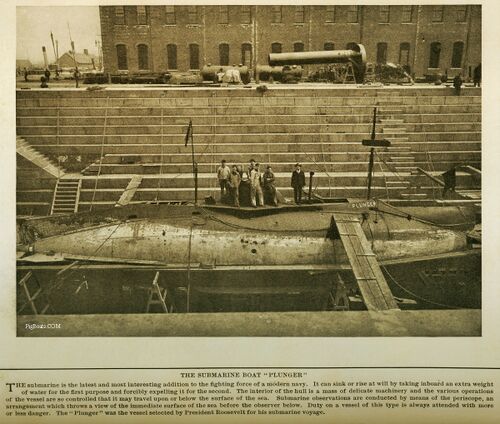
Adder/A-2 (Submarine No. 3, later SS-3)
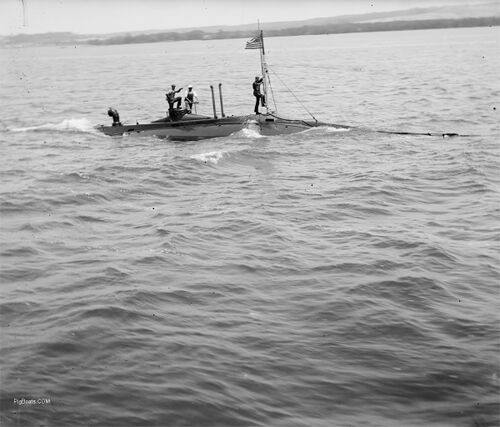
Grampus/A-3 (Submarine No. 4, later SS-4)
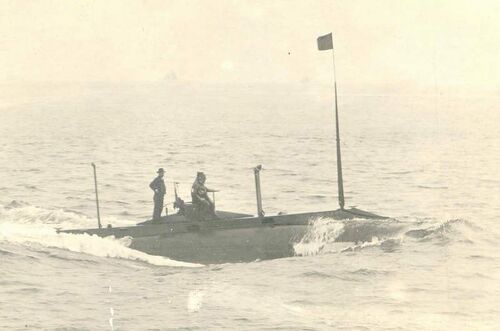
Moccasin/A-4 (Submarine No. 5, later SS-5)
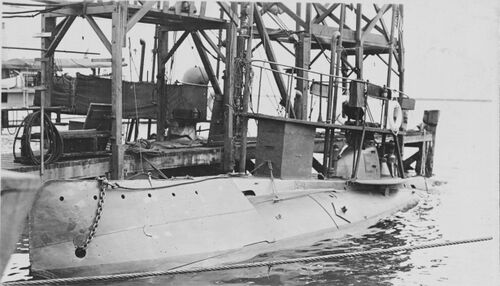
Pike/A-5 (Submarine No. 6, later SS-6)
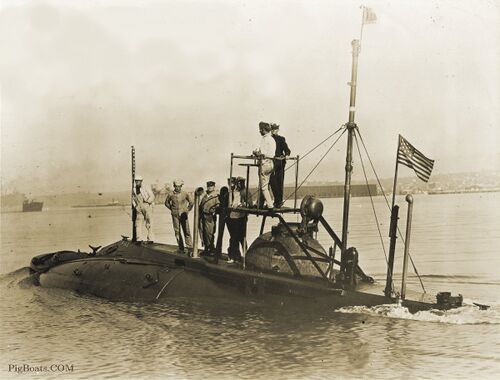
The helmsman, standing next to Donavin, seems to be smoking a pipe. Note that the shaft for the helm extends down into the pressure hull. It mates up to the below deck helm. The topside helm is removable and was usually stored outboard the torpedo tube inside the hull. The man standing at the left and leaning on the jackstaff looks to have pinned the commissioning pennant so it wouldn’t flap in his and the others faces.
The two men in shadow in front of the bridge seem to be officers and more likely are day riders. The flag at the top of the periscope looks to be a Squadron flag and has the numeral “1” on it. One of the men may be the Commodore of the 1st Submarine Group, Pacific Torpedo Flotilla, Ensign James Perdue Olding and possibly his aide. One man is wearing a necktie and both are wearing officer's caps. There looks to be one Chief topside. The crew was mostly made up of rated personnel. The Navy was taking only volunteers and the most experienced in their rates at that time. The Chief standing between the two ventilators is either GMC Raymond Ryan or EMC William H. Essig. These two men were known to have been aboard during the time frame of this photo but no identified images of either man has been found.
The tall “pole” is the periscope. These early periscopes were fixed in place and only pointed forward. They did offer some protection allowing the submarine to be deeper and not needing to broach to see out of the deadlights in the conning tower.
At the base of the periscope is the magnetic compass binnacle. They were placed above and as far away from the steel hulls as possible. The compass was viewed through a series of mirrors. Just behind the conning tower near the “X” bracing for the bridge is the ship's air whistle.
Porpoise/A-6 (Submarine No. 7, later SS-7)
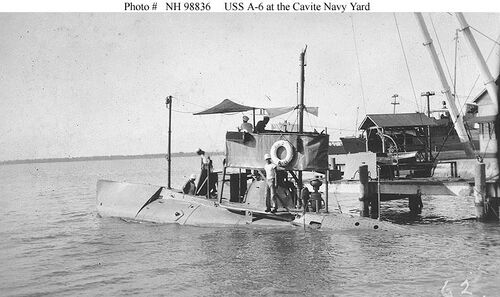
Shark/A-7 (Submarine No. 8, later SS-8)
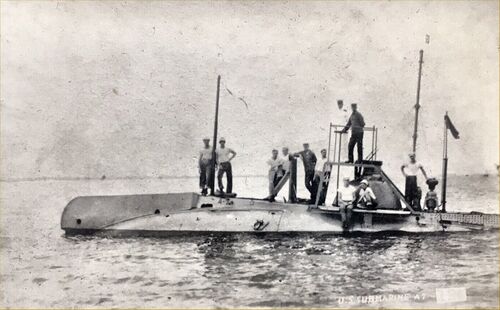
General A-class and group photos
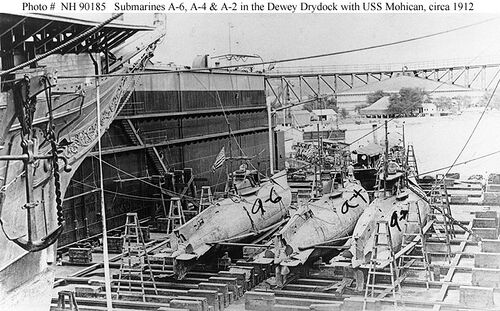
USS Dewey (Drydock No. 1, later YFD-1) was a fixture in Subic Bay for over 37 years. She provided invaluable repair services to dozens of Asiatic Fleet ships and submarines during her career. She was scuttled by U.S. forces to prevent capture in early 1942, but was raised and reconditioned by the Japanese. She was sunk a 2nd time by U.S. forces in 1944 and destroyed.
See more General A-class and Group photos
Page created by:
Ric Hedman & David Johnston
1999 - 2023 - PigBoats.COM©
Mountlake Terrace, WA, Norfolk, VA
webmaster at pigboats dot com
